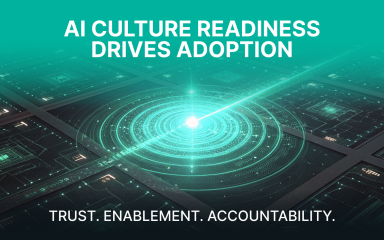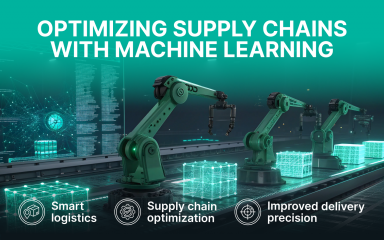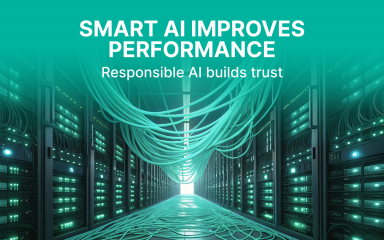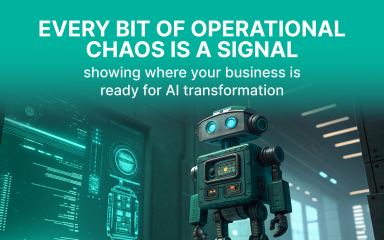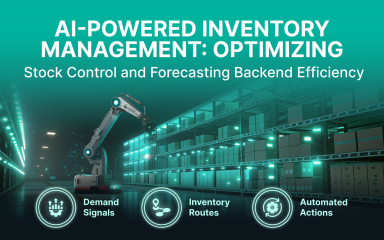Why 68% of AI Ecommerce Projects Fail — And What the Successful 32% Do Differently
Most AI ecommerce projects fail for one simple reason: companies try to implement AI tools before they’ve earned the right to. Messy customer data, unclear goals, and misaligned teams all lead to disappointing results — or worse, total project collapse.
Meeting consumer expectations is a key challenge for ecommerce retailers and online retailers when adopting AI, as these businesses must deliver personalized shopping experiences, follow market trends, and build trust to succeed in the digital marketplace.
But that’s only part of the story. Because the other 32%? They’re quietly transforming the ecommerce industry using artificial intelligence in retail the right way — grounded in strategy, not hype. Successful ecommerce retailers and online retailers are leveraging AI to meet rising consumer expectations, using advanced technologies to personalize customer experiences and optimize sales processes.
Let’s break down what goes wrong (and how to get it right) with ecommerce AI implementation in 2025.
The Harsh Reality — Why Most Ecommerce AI Projects Don’t Deliver
The stat is hard to ignore: 68% of AI projects in online retail fail. Despite enormous spending and promises, many AI ecommerce efforts never make it past the pilot stage — or worse, they launch and create more confusion than clarity.
This high AI project failure in ecommerce is more than just a technical issue — it’s often strategic, organizational, and data-related. Failed AI case studies consistently show that businesses struggle with adoption, integration, and proving measurable ROI.
Failed projects often miss out on operational efficiencies and enhanced customer service that AI can provide, leaving businesses unable to fully leverage the technology’s potential.
So, what’s really going on behind these failures, and what are the true reasons AI fails in ecommerce?
No Clear ROI Model
The biggest mistake? Treating AI like a silver bullet.
Companies adopt AI technology hoping it will “just work” — boost conversion rates, improve customer satisfaction, reduce logistics costs. But it’s impossible to prove success without a measurable AI ROI in ecommerce tied to business value.
Tracking marketing ROI, especially in the context of personalized campaigns and AI-driven customer segmentation, is essential to demonstrate how targeted strategies can significantly improve outcomes.
Unclean, Incomplete, or Inaccessible Customer Data
AI powered systems need consistent customer interactions, detailed shopping history, clean product descriptions, and structured inventory data. Accurate data is especially critical for effective inventory management and supply chain processes, as AI relies on this information to optimize stock levels, reduce costs, and enhance overall efficiency. Most ecommerce platforms, however, are built on years of inconsistent data mining practices and outdated structures.
As a result, machine learning algorithms can’t learn much — they’re stuck interpreting chaos.
Vendor Lock-In & Tech Silos
Some teams invest in off-the-shelf AI systems that can’t talk to their existing ERP, CRM, or order management tools. Integration breaks, processes stall, and the AI ends up shelved.
This is one of the most overlooked AI challenges in online retail — incompatible infrastructure that slows everything down.
Unrealistic Expectations
We’ve all heard the hype: generative AI, natural language processing, and predictive analytics promise to reinvent the online shopping experience.
But these tools don’t work on autopilot. They require time, feedback loops, and a human touch. Too many ecommerce companies buy the dream before understanding the work.
 Common Mistakes Businesses Make With AI Implementation
Common Mistakes Businesses Make With AI Implementation
The gap between vision and reality often comes down to execution. Failing to leverage data driven decision making and providing actionable insights is a common pitfall in AI ecommerce projects, leading to missed opportunities for optimization and growth. These are the most common traps that cause AI ecommerce projects to stall:
Mistake #1: Thinking More Data = Better Machine Learning Algorithms
More data isn’t always helpful, especially if it’s unstructured. You’re just training your AI on noise without data-driven insights and proper labeling. Analyzing search queries and optimizing for search engines requires high-quality, structured data for AI to be effective.
Smart teams focus on actionable insights from consumer behavior, not just collecting more big data analytics.
Mistake #2: Overengineering the Problem
You don’t need deep learning models to predict what a customer might reorder. A simple rules engine might suffice. Overkill tech wastes resources — and distracts from real impact.
Stick with the right-sized solution for your customer journey and goals.
Mistake #3: Ignoring Human Users
Your AI chatbot may be state-of-the-art, but it’s dead on arrival if your support agents hate using it. Always include human users in testing and feedback.
Mistake #4: Isolating the AI Team
Successful AI in ecommerce businesses is cross-functional — blending product, data, marketing, and ops. When teams work in silos, AI integration mistakes happen, fast.
Mistake #5: Forgetting About Data Privacy and Compliance
AI can’t operate in a vacuum, especially when handling sensitive customer data, purchase history, or customer preferences. Failing to account for data privacy laws like GDPR or CCPA doesn’t just risk fines — it erodes customer trust.
Too often, AI systems are built without a clear policy for consent, transparency, or data governance. And that’s a fast track to stalled projects and compliance headaches.
The fix? Involve legal and data security teams early, and build trust into every layer of your AI stack.
Lessons From the Trenches: What the Successful 32% Do Right
Not everyone’s failing. The smartest AI ecommerce teams treat AI as a long game, using advanced technologies to deliver superior customer experiences and create engaging interactions that set their brands apart.
By leveraging AI to deliver a personalized experience and increase customer lifetime value, these teams ensure tailored shopping journeys and maximize long-term profitability.
This is how to succeed with AI in ecommerce:
They Start Small and Scale
Forget “transform the whole business.” Start with something practical — like improving customer engagement through predictive analytics or reducing inventory costs using machine learning in ecommerce.
They Build Cross-Functional AI Teams
The best ecommerce AI adoption strategies are team efforts: product owners, marketers, data scientists, and copywriters (because compelling product descriptions also matter, and AI language models can assist in creating product descriptions tailored to brand voice and customer needs). You need marketers who know brand voice, product managers who understand user needs, and data scientists who can align outputs to KPIs.
They Integrate With What’s Already Working
Don’t rebuild from scratch. Add AI powered features into your CRM, connect to your order management system, and improve search on your ecommerce website.
This kind of ecommerce automation with AI unlocks value without overhauling your tech stack.
They Measure What Matters
No vanity metrics. Just clear KPIs: Did AI powered personalization lift customer engagement? Did it reduce logistics costs? Are customer satisfaction scores up? Are previous purchases being tracked and leveraged to optimize AI-driven personalization? Are search results becoming more relevant and personalized as a result of AI implementation?
How to Rescue a Failing AI Project
Already halfway in and panicking? Don’t write it off. Here’s what you can do.
Redefine Your KPIs
If your goal is still “add AI,” start over. Set clear outcomes tied to business value, like reducing customer service response time or improving inventory costs.
Clean (and Re-Label) Your Data
Before doing anything else, organize your customer interactions, purchase history, and product listings. AI learns from your mess, so give it something worth learning from.
Cut Scope or Change Vendor
That flashy generative AI solution may not be the right fit. Don’t be afraid to switch gears — or even vendors — if the tool isn’t serving real needs.
Add Humans to the Loop
AI isn’t about removing people — it’s about helping them. Sometimes, adding a human-in-the-loop process (like manual QA on auto-generated product descriptions) saves the whole project.
Real-World Tales: One Failure and One Fix
Let’s put faces to these stats — anonymized, but real.
The Failure: Too Much, Too Soon
A fashion ecommerce brand rolled out generative AI to write thousands of product descriptions across categories. The problem? It used the same tone and keywords for everything. SEO tanked. Bounce rates spiked. And customers complained that everything “sounded like a robot.”
They had to rewrite it all manually.
The Recovery: From Abandonment to Results
A mid-sized home goods ecommerce business started using AI tools for predictive analytics, but saw no impact for months. The issue? Their data was too shallow.
So they went back, enriched their historical data, connected their ecommerce website to a central data warehouse, and focused on one small goal: predicting demand for five top SKUs.
That small success built momentum. Six months later, they had a full smart logistics suite up and running, cutting stockouts by 30% and improving customer loyalty.
FAQs: Your Burning AI in eCommerce Questions, Answered
What’s the most common reason AI ecommerce fails?
Lack of alignment between goals, data, and people. AI isn’t plug-and-play. It needs strategy, maintenance, and human context.
How much data do I need to get started?
Not as much as you think — quality matters more than quantity. Start with focused datasets: customer preferences, purchase history, and product performance.
Can AI work for small ecommerce businesses?
Absolutely — if used intentionally. Think AI chatbot for FAQs, or voice commerce for quick reorders. Small wins add up.
What To Do Next: A Quick Checklist
✅ Clarify your AI goals.
✅ Audit your data.
✅ Pick one high-impact use case.
✅ Loop in cross-functional stakeholders.
✅ Integrate with existing systems.
✅ Measure. Learn. Then scale.
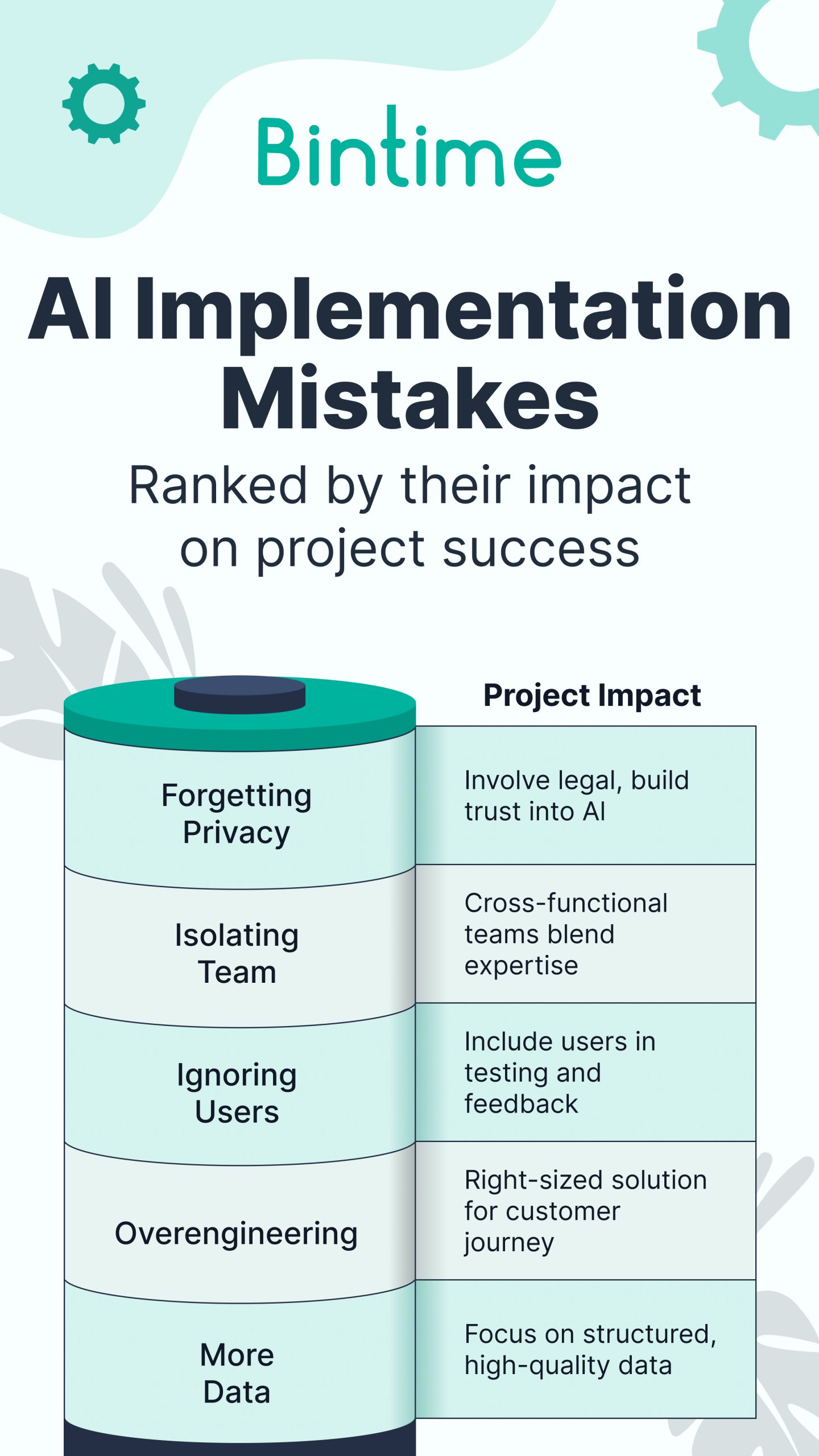 Common Mistakes Businesses Make With AI Implementation
Common Mistakes Businesses Make With AI Implementation
